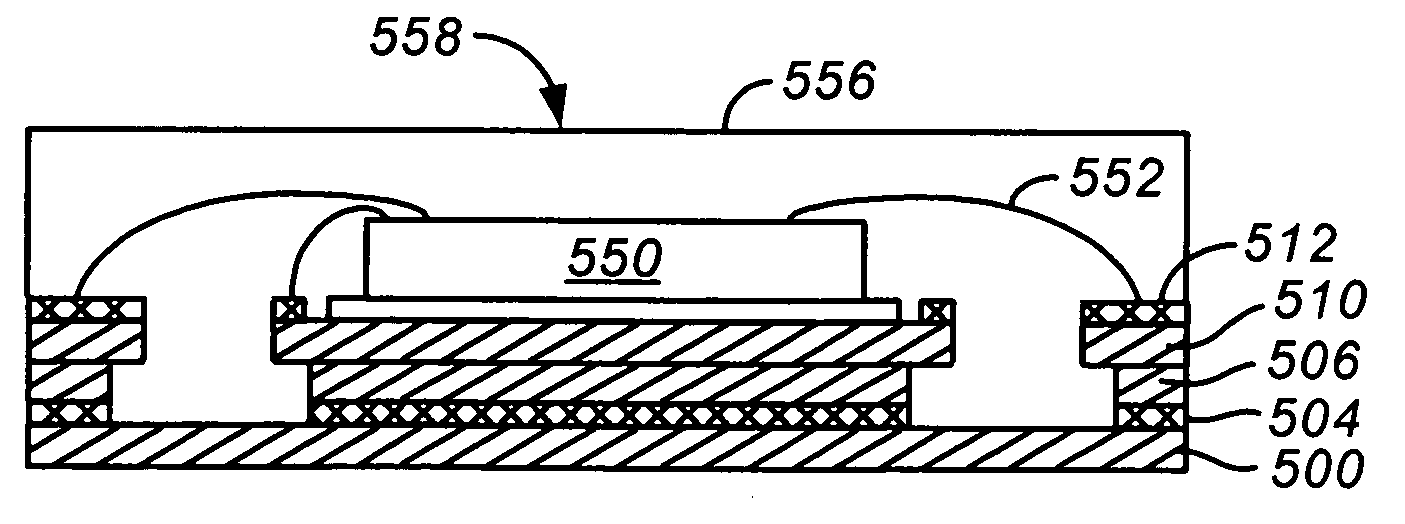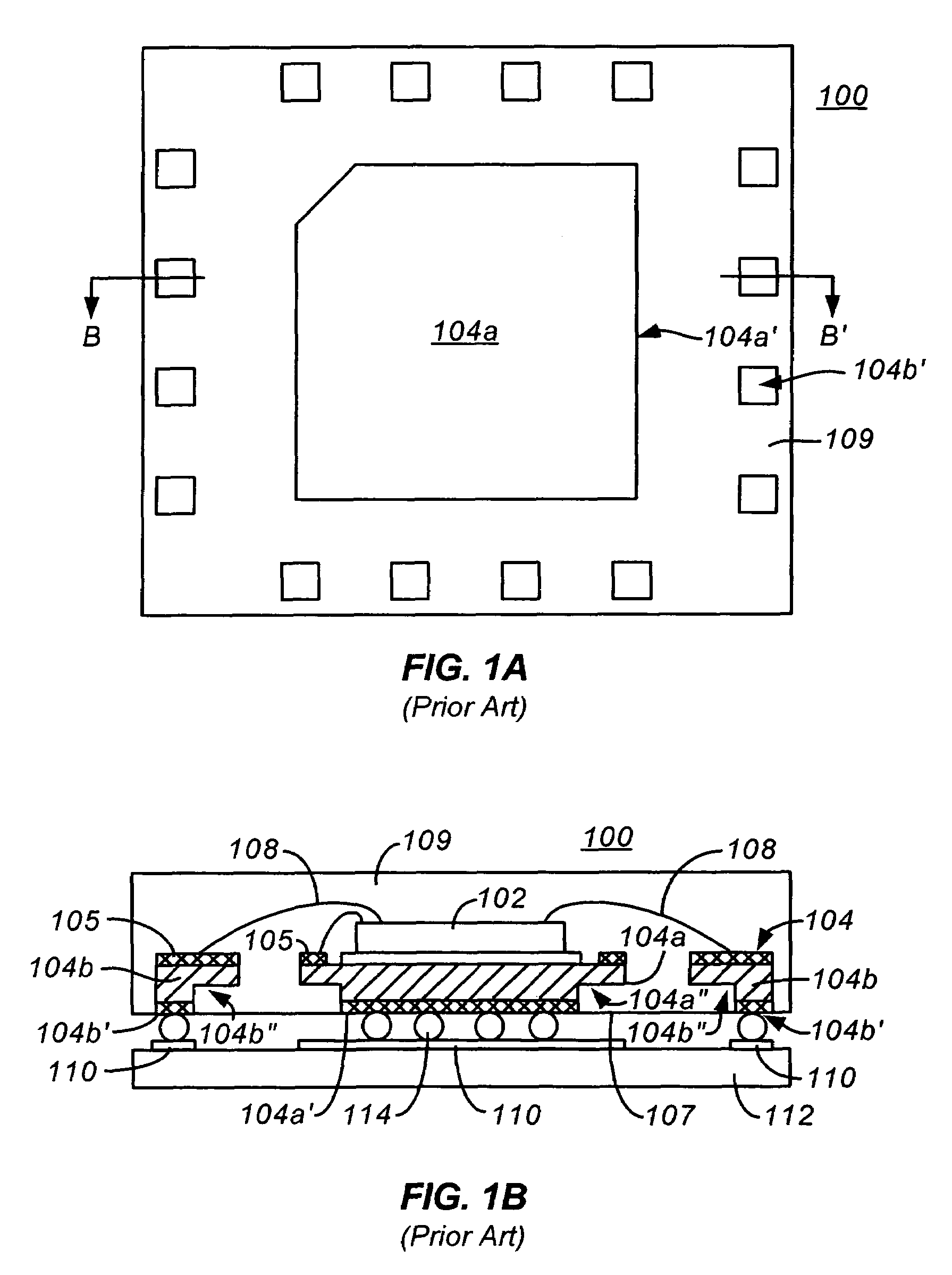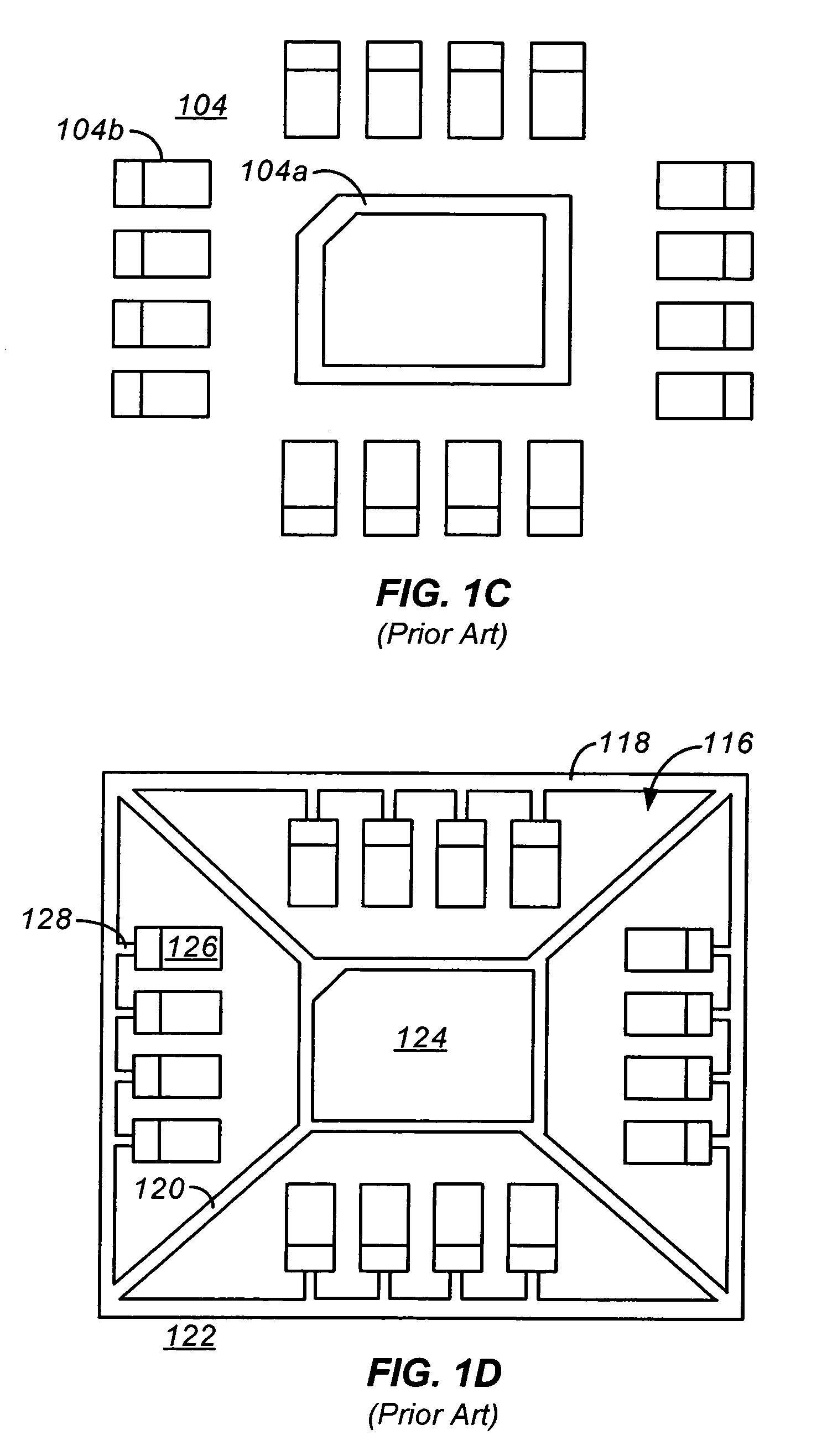Semiconductor device package diepad having features formed by electroplating
a technology of electroplating and semiconductor devices, which is applied in the direction of semiconductor devices, semiconductor/solid-state device details, electrical apparatus, etc., can solve the problems of difficult control of the etching stage of the qfn package fabrication process shown in fig. 1f with precision, inability to rapidly and reproducibly stop the progress of chemical etching reaction, and difficulty in forming raised features on the lead frame. to achieve the effect of ensuring the level of the die within the packag
- Summary
- Abstract
- Description
- Claims
- Application Information
AI Technical Summary
Benefits of technology
Problems solved by technology
Method used
Image
Examples
first embodiment
[0059]In the first embodiment shown in FIGS. 3A–EA, regions of additional thickness of the lead frame corresponding to the exposed lead-posts and diepad are formed by the addition of Cu material. Specifically, a layer of Cu material of precise thickness may be deposited by electroplating over the Cu roll under carefully controlled conditions. The precision of this electroplating process is +1 μm or less. This precision may be compared with conventional etch processes, which exhibit a precision of +25 μm for a Cu substrate having an overall thickness of 4–5 mils. The superior precision of electroplating processes over etching processes may be attributed to the ability to quickly halt electrochemical addition of material reaction by changing the electrical potential.
[0060]The embodiment of the present invention shown in FIGS. 2, and 3A–EA offer a number of advantages. One advantage is relative similarity to the conventional package fabrication process. Specifically, fabrication is acc...
second embodiment
[0071]Owing to this absence of the tie bars, the lead frame of this second embodiment includes four additional pins. These additional pins are located in regions formerly occupied by the tie bars.
[0072]In step 418 illustrated in FIG. 5I, die 550 is attached to the diepad portion with electrically conducting adhesive, and bond wires 552 are connected between die 550 and the pins. In step 420 illustrated in FIG. 5J, the die / lead frame combination is encapsulated in plastic material 556 while still being supported by the Cu roll 500.
[0073]In step 422 illustrated in FIG. 5K, an array of packages within the encapsulant are separated from the underlying Cu support roll by selective chemical etching. A number of Cu etching techniques are known in the art. One approach involves exposure to aqueous FeCl3, and is described in detail by Duffek and Armstrong, “Etching in Printed Circuit Handbook”—Chapter 6, C. F. Coombs, Ed. (McGraw-Hill, New York, 1967). Another approach involves exposure to a...
PUM
 Login to View More
Login to View More Abstract
Description
Claims
Application Information
 Login to View More
Login to View More - R&D
- Intellectual Property
- Life Sciences
- Materials
- Tech Scout
- Unparalleled Data Quality
- Higher Quality Content
- 60% Fewer Hallucinations
Browse by: Latest US Patents, China's latest patents, Technical Efficacy Thesaurus, Application Domain, Technology Topic, Popular Technical Reports.
© 2025 PatSnap. All rights reserved.Legal|Privacy policy|Modern Slavery Act Transparency Statement|Sitemap|About US| Contact US: help@patsnap.com



